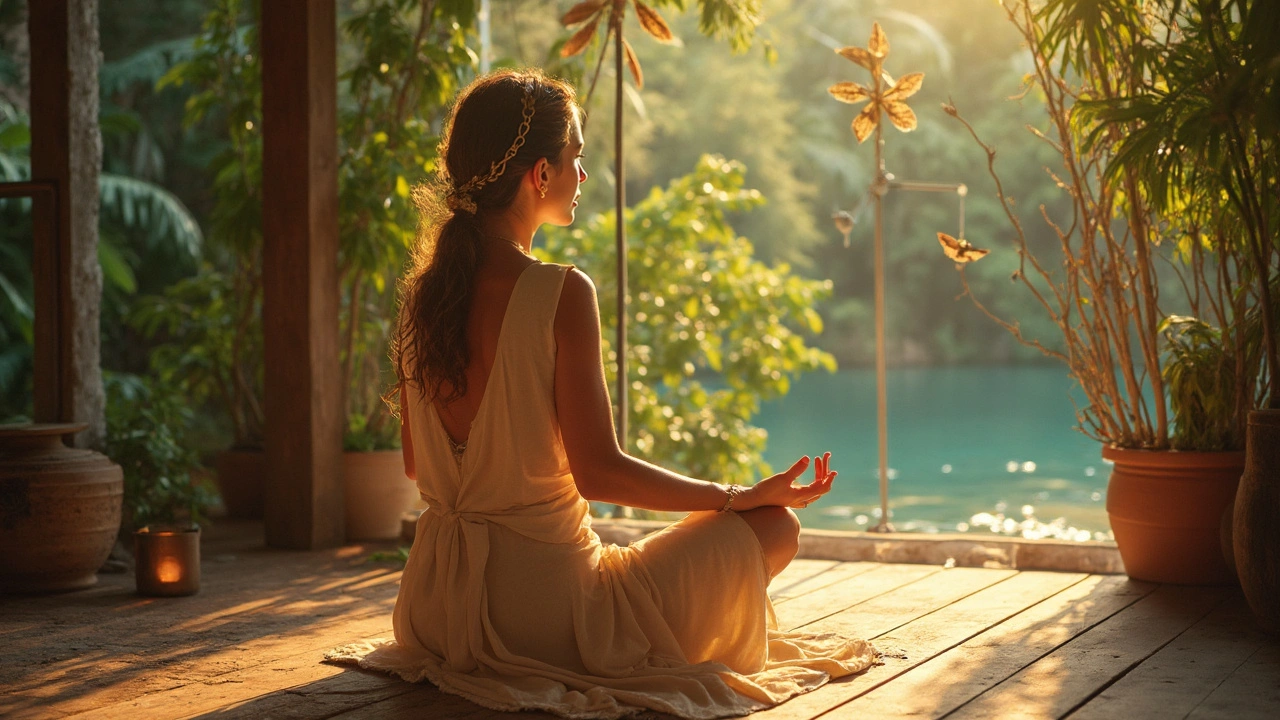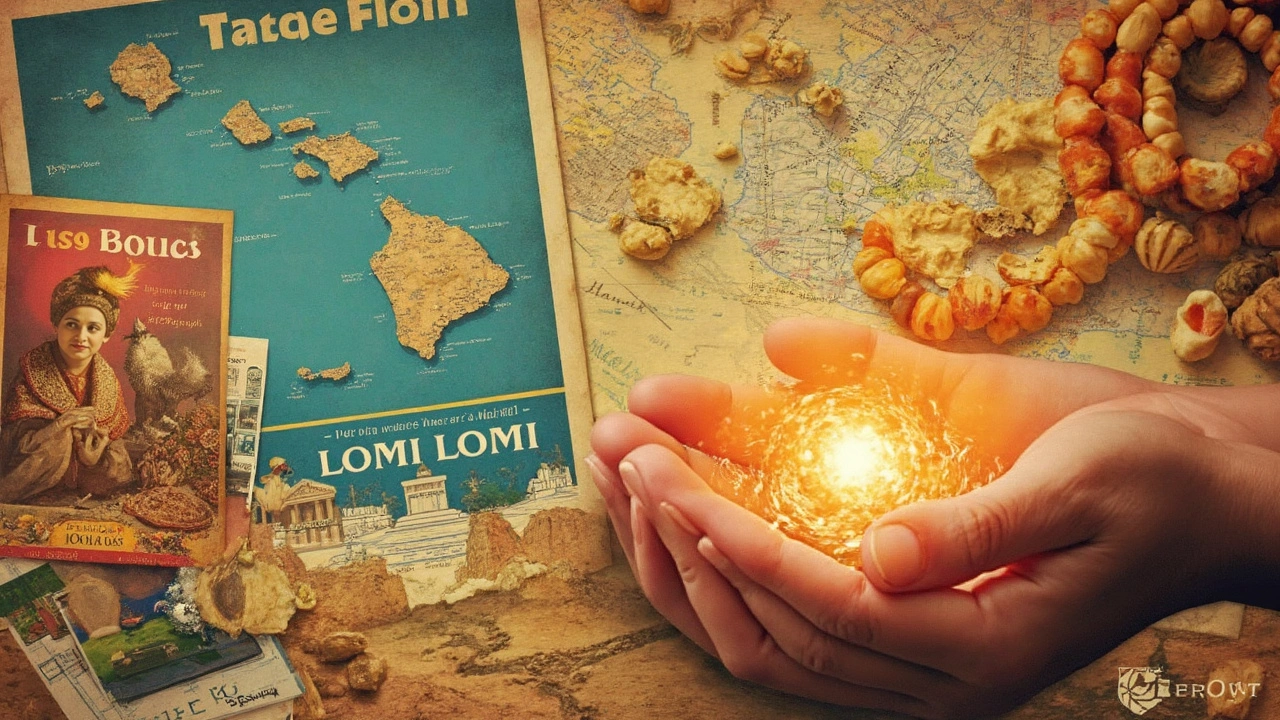Lomi Lomi Massage: Ancient Hawaiian Healing Techniques Revealed
 Jun, 25 2025
Jun, 25 2025
When you first hear “Lomi Lomi,” it rolls off the tongue like a wave slipping back into the sea. Ask someone from Hawaii, and they might tell you it’s not just another massage. This is a bodywork passed down by healers—practiced in families, hidden from colonizers, shared with care. In ancient times, if you had a big decision, a major life change, or even a stubborn pain in your back, you’d see a Lomi Lomi practitioner before anyone else. To this day, Lomi Lomi is a blend of physical touch, breathing, intention, and ritual—all woven together.
The Deep Roots of Lomi Lomi Massage
Lomi Lomi didn’t show up in spa brochures or beauty magazines until pretty recently. Back in ancient Hawaii, this massage was guarded, handed down in families like a precious secret recipe. Every island had its flavor. On Kauai, some used stones from riverbeds and sang prayers. In Maui, grandmothers passed the teachings to granddaughters in the shade of breadfruit trees. You didn’t just learn strokes—you learned discipline, respect, and when to say no. Lomi Lomi literally means "to knead, to rub, or soothe." Hawaiians believed sickness wasn’t just physical; it was tangled up in your spirit, too. Their approach: release what no longer serves you.
Missionaries arrived in the 19th century and tried to suppress the practice; anything that looked spiritual from the islands was labeled pagan. Lomi Lomi survived by going underground—kept alive by a few soulful families who resisted outsiders. By the 1970s, teachers like Auntie Margaret Machado and Abraham Kawaiʻi began sharing the art beyond Hawaii, but always with a request: "You must practice with love and intention." Today, many believe Lomi Lomi is making a real comeback as more people want whole-person wellness, not just stress relief.
What Makes Lomi Lomi Massage Unique?
Walk into a Lomi Lomi session and you might be surprised. The strokes are long, flowing, and often cover the whole length of the body. Practitioners use forearms, elbows, knuckles—even gentle stretches and rocking motions. At times, the therapist moves like a hula dancer around you, coordinating breath and rhythm. It’s not a deep-tissue pummeling. It’s more of a wave—gentle, powerful, connected. Don’t expect to feel like you’re lying on a clinical table, either. Traditional sessions sometimes start with breathwork or even guided prayers, known as pule.
The philosophy behind Lomi Lomi says the body is wise. It remembers every good and bad thing you’ve experienced. “Mana”—your spiritual energy—can get blocked by tension, trauma, or even regular everyday stress. The job of Lomi Lomi is to unblock that flow, not just to make your shoulders loose but to create a shift in your whole being. According to research conducted by the University of Hawaii in 2020, subjects who received weekly Lomi Lomi sessions reported higher satisfaction scores compared to those getting standard Swedish massages (see table).
| Massage Type | Reported Stress Relief (%) | Reported Mood Improvement (%) |
|---|---|---|
| Lomi Lomi | 87 | 90 |
| Swedish | 70 | 76 |
Lomi Lomi therapists often tell clients not to hold back tears, sighs, or even laughter on the table. You don’t have to "keep it together." That’s the point—let go. Some even claim that, after just one session, you’ll sleep deeper, smile easier, and find yourself breathing in sync with old ocean tides.

Real Benefits: Beyond Relaxation
If you’re searching for a massage that only melts knots, you’ll still get your wish with Lomi Lomi. But the effects go deeper—it can ripple out into the way you move, think, and feel. Countless people say it helps with chronic pain, lingering injuries, and emotional baggage. And it’s not just anecdotal. A 2019 analysis in the International Journal of Therapeutic Massage showed measurable improvements in heart rate variability (which means your body is less stuck in “fight or flight”), and reduced symptoms of depression and anxiety.
- Lomi Lomi massage improves circulation, helping flush out toxins and bring fresh oxygen everywhere it’s needed.
- It can ease headaches, loosen stiff necks, and help speed up recovery after workouts or minor injuries.
- Lomi Lomi’s flowing rhythm doesn’t just knead your muscles. It calms your nervous system. If you’re a chronic overthinker, the long strokes act almost like a meditation, helping your brain let go of looping worries.
- Lomi Lomi can break the pattern of shallow breathing. When the therapist synchronizes breath with touch, it encourages you to slow down and breathe deeply—a skill that sticks around long after the session ends.
- If you’ve been holding onto tough emotions, Lomi Lomi creates space for release without needing to talk it out. Your body gets a reset—no awkward “talk therapy” necessary.
Many top athletes use Lomi Lomi in the offseason as part of holistic recovery. Some wellness clinics are even starting to blend it with physical therapy for people overcoming surgeries, especially hips, backs, and shoulders. It’s gentle enough for elders but strong enough for big muscles. Mothers-to-be sometimes use a modified version to ease pregnancy pains, with huge success in Hawaii’s birth centers.
What To Expect in a Real Lomi Lomi Session
The best Lomi Lomi experience isn’t a cookie-cutter routine. Instead, every session feels custom-made. Your therapist may start by talking to you for a few minutes—asking what brought you here, where you feel stuck, or what kind of healing you want. In Hawaii, some therapists offer a pule—asking for guidance or blessings. The room smells of natural oils—think coconut, macadamia, or kukui nut, sometimes blended with wild ginger or plumeria.
You might notice the table feels wider, or the draping a little different, with sheets or towels allowing for those long, continuous strokes across both sides of your body. Don’t be surprised if you feel movement from your toes up to your shoulders in a single motion. During the massage, the therapist’s arms flow almost like ocean waves—always in motion, always connected. Sometimes, subtle rocking motions mimic the sea. You’ll notice silence or soft traditional Hawaiian music—no pop ballads or “spa sounds.” Your job? Let go. Allow whatever needs to bubble up, bubble up. Sigh. Cry. Smile. Even giggle if you must. Practitioners often say, what leaves your body leaves your spirit, too.
Afterward, people sometimes say they feel “lighter”—not just physically, but emotionally relieved. Rarely do you want to just leap up and get dressed. So, set aside extra time. Drink water. Take a slow walk afterward. If you have a sensitive stomach (or carry a lot of tension), you might feel like you just finished a big workout.
Gratitude is a key piece, too. In Hawaiian culture, acknowledging the practitioner or even the space (with a simple “mahalo”) helps close the session. No tipping required—it’s often seen as an exchange of energy, not just a service.

Tips for Experiencing the Best Lomi Lomi Massage
- Do your research before you book. In Hawaii, some families and lineages have passed down the original forms—look for a practitioner with “Auntie-taught” or lineage credentials. Outside the islands, ask if they’ve studied with a Hawaiian teacher, not just a massage school.
- If you’re not sure what to expect, or if something feels too intense, say so. Lomi Lomi is all about communication and honoring boundaries. The practitioner can always lighten up or focus elsewhere.
- Hydrate well before and after. Like with any massage, releasing old tissue tension can make you thirsty or tired.
- Set an intention before the session—either with your therapist or privately. Hawaiian healers believe what you ask for sets the stage for what you receive.
- Be willing to release. Sometimes you may feel unexpected emotions or memories pop up. Trust that it’s part of the process.
- If you’re looking to learn, consider a local workshop or retreat. Some Hawaiian families open up one or two spots per year for students who are truly serious about the practice—not just the massage, but the culture and respect that go with it.
One last thing—don’t expect every Lomi Lomi to be exactly the same. Sessions adapt to your needs, your energy, your readiness to let go. If your body needs something tender, you’ll get it. If you need strength, your therapist will step it up. You’re not just another client on the list—you’re part of a living tradition that’s bigger than any muscle knot or sore spot.
